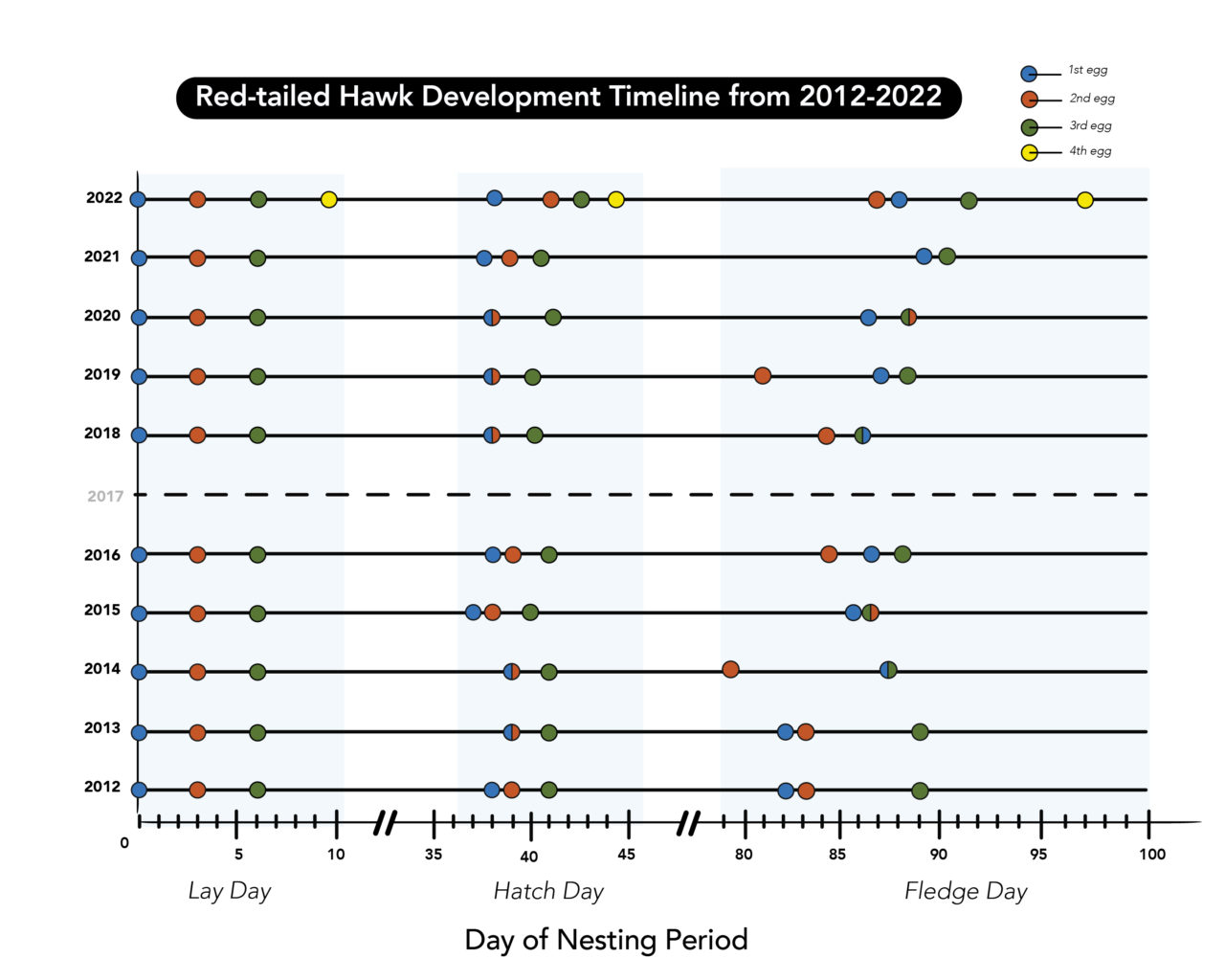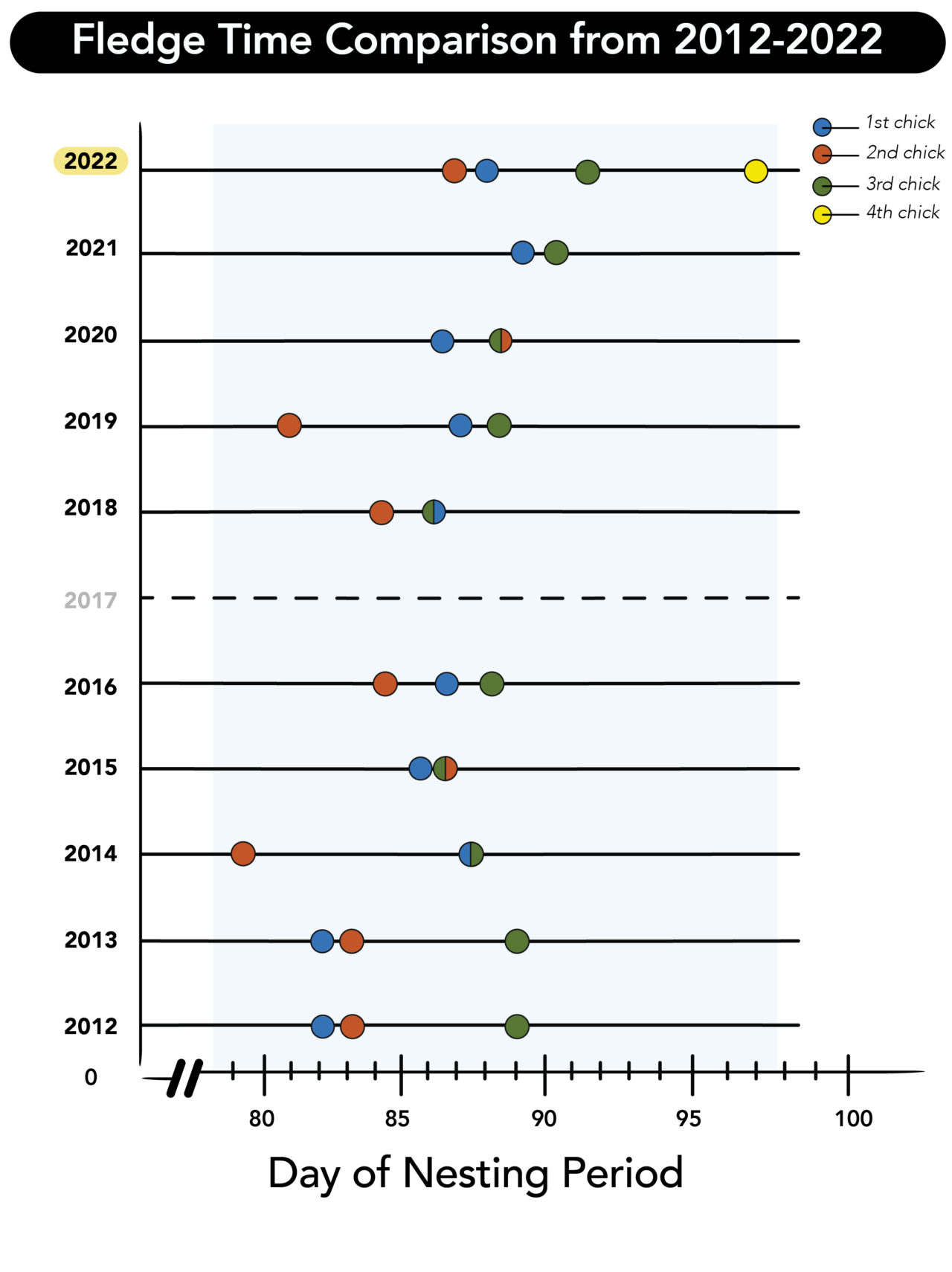Cornell Hawks End A Special Season With Successful Fourth Fledge
June 21, 2022
The fledge of L4 on June 19th, 2022 at 7:03 A.M. marks the first time in ten years that Cornell’s Red-tailed Hawks have raised four chicks from hatch to fledge. Ever since 2012, we’ve watched Big Red lay three eggs—one every three days—eventually welcoming three chicks to the nest. One season after the next would see the same pattern: three eggs, three chicks. That is, until Big Red hunkered down to lay a fourth egg this spring, rendering the 2022 season unlike any other in Cornell Hawks history. But such a unique year as this results in a few unknowns. How would an extra chick impact the nest? Let’s see what the data reveals.

Now that all four hawks have fledged, we can assess how an additional sibling may have altered the fledglings’ progression through the nesting season. The first stage of the season started off no differently: Big Red stuck to her punctual laying schedule of one egg exactly every three days, the unexpected fourth egg fitting neatly into this sequence.
It wasn’t until the eggs started hatching when we began to see how the fourth egg would impact the timing of the nesting period. In previous years, the second egg hatched within a day (or even on the same day) of the first egg. This year, however, the second and third hatches were delayed, the chicks arriving 41 and 42 days after the first egg was laid.
Fledge periods were also nudged back. The first to take flight was L2, with L1 close behind the next day. These two fledge times weren’t abnormal compared to past years. Rather, it was the third fledge that differentiated this season from others. After perching on the nest railing for a few days, L3 made the latest fledge (49 days after it hatched) compared to the third chicks of previous nests. And of course, L4 took the latest flight of any season, fledging 52 days after it hatched—just one day outside of the 46-51 day range typical of this nest.
Ultimately, from the hatch of the first egg to the fledge of the fourth nestling, the 2022 nesting season was 92 days long, securing its status as the longest nesting period in Cornell Hawks history.
And yet, the past few months weren’t spent solely in anticipation and celebration of these milestones—laying, hatching, and fledging—but also experiencing the moments in between that expanded our perception of hawks beyond simply being efficient predators. We witnessed resilience and softness, playfulness and curiosity.

We watched as Arthur and Big Red tag-teamed incubation duties; as Big Red gently fed a bobbling L1 its first meal; and as the four siblings tussled for a snack, meandering about the nest and stepping on one another as they found their footing. We watched as they peered curiously into the camera, and as they embarked, one by one, on the next stage of their journey.
The personalities and dynamics found within the Cornell Hawks nest never cease to captivate. This year, we can thank the fourth and unexpected chick L4 for prolonging the nesting season, giving us a few more days to watch the hawks in action. And while this may be the end of the 2022 Red-tailed Hawks live cam, it’s only the beginning for the fledglings, who are now learning to navigate the skies they once merely observed.

Bird Cams is a free resource
providing a virtual window into the natural world
of birds and funded by donors like you
Pileated Woodpecker by Lin McGrew / Macaulay Library